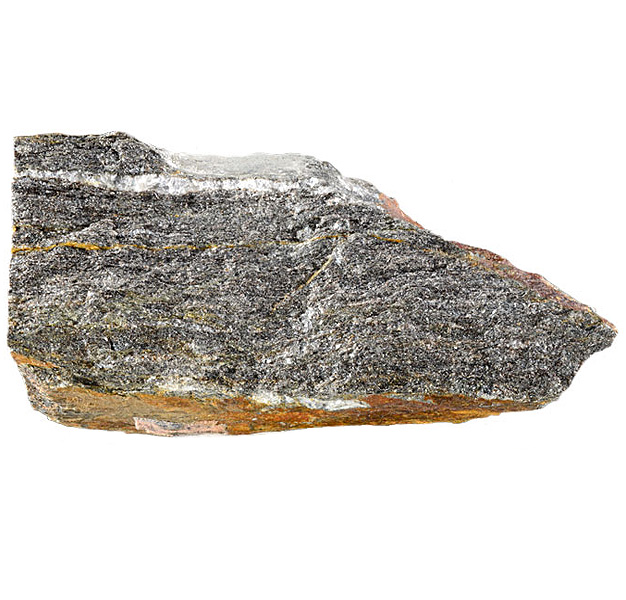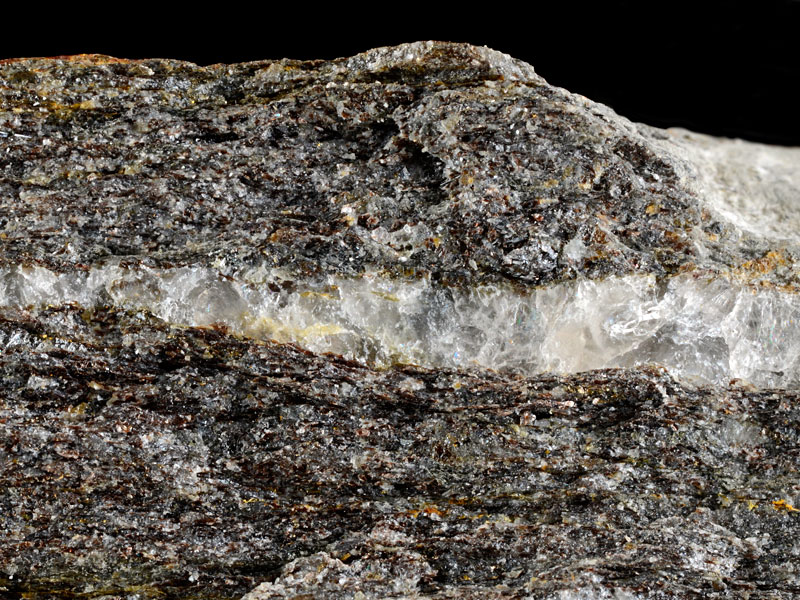
Fact sheet
This rock was deposited as either a siltstone or as banded silt and mudstone in the late Proterozoic period, before being subject to regional metamorphism. It now forms part of the Dalradian succession within the ‘staurolite’ Barrovian metamorphic zone (Barrow zones include chlorite-biotite-garnet-staurolite-kyanite-sillimanite). The sample comes from an area between Letterfrack and Dawros, Connemara, County Galway, Ireland, part of the Irish Dalradian sequence that has been correlated with similar rocks in Scotland.
The thin section contains many small, inclusion poor grains of staurolite, which is a high relief mineral pleochroic with colours ranging from pale yellow to almost colourless in plane polarised light, and with low birefringence colours in crossed polars. The tectonic fabric of the rock is defined by muscovite and biotite micas, which alternate with layers dominated by quartz and feldspar. The Barrow indicator minerals garnet (in the bottom left corner of the section) and biotite are present, but the grade of the rock is defined by the presence of staurolite since it is the highest indicator mineral in Barrow’s classification.
The United Kingdom Virtual Microscope (UKVM) collection consists of igneous, sedimentary and metamorphic rocks from around the UK.
It is intended as a teaching resource, helping to tell the story of the common rock types and how they form, and reflecting the history of the UK at the margins of the continent of Europe. The collection is a series of teaching sets, for example igneous rocks from the North Atlantic Igneous Province and SW England; high-temperature metamorphic rocks from Scotland and low-temperature metamorphic rocks from Wales; and sedimentary rocks, including English limestones and sandstones.







